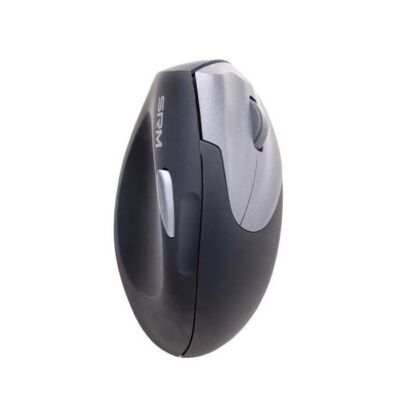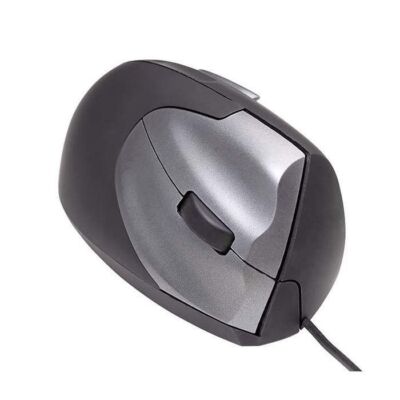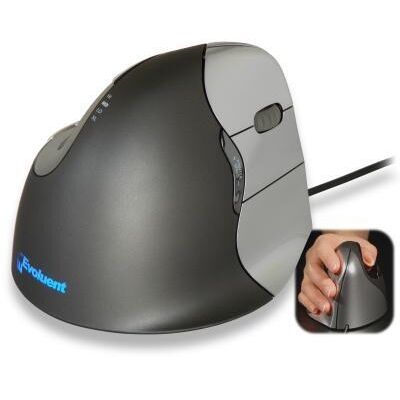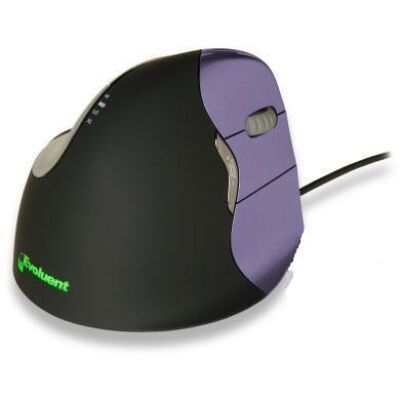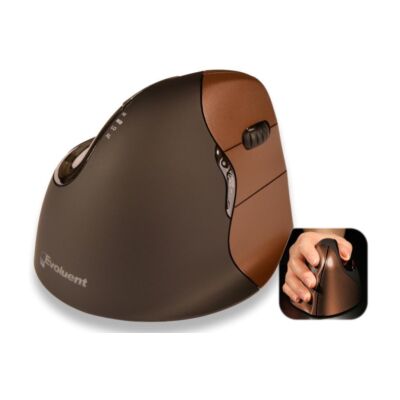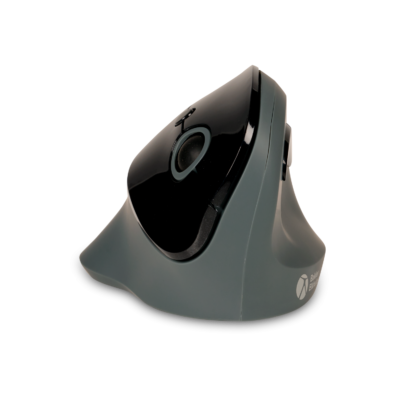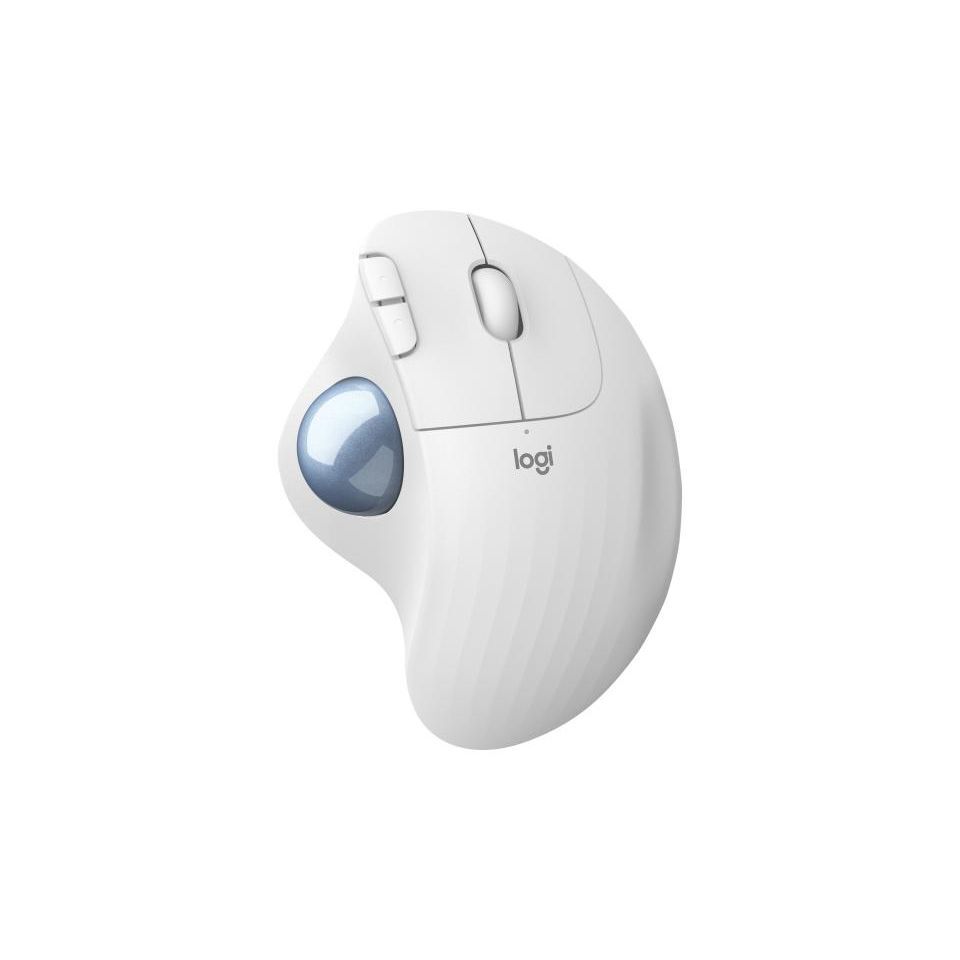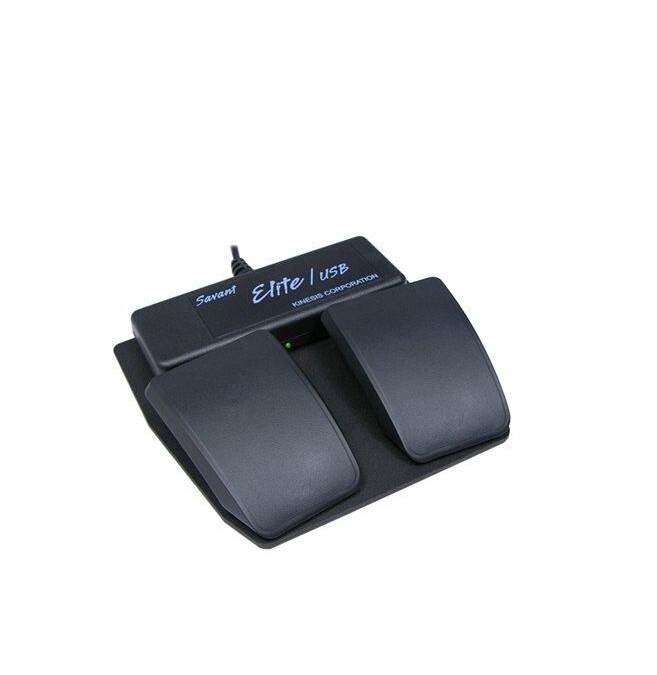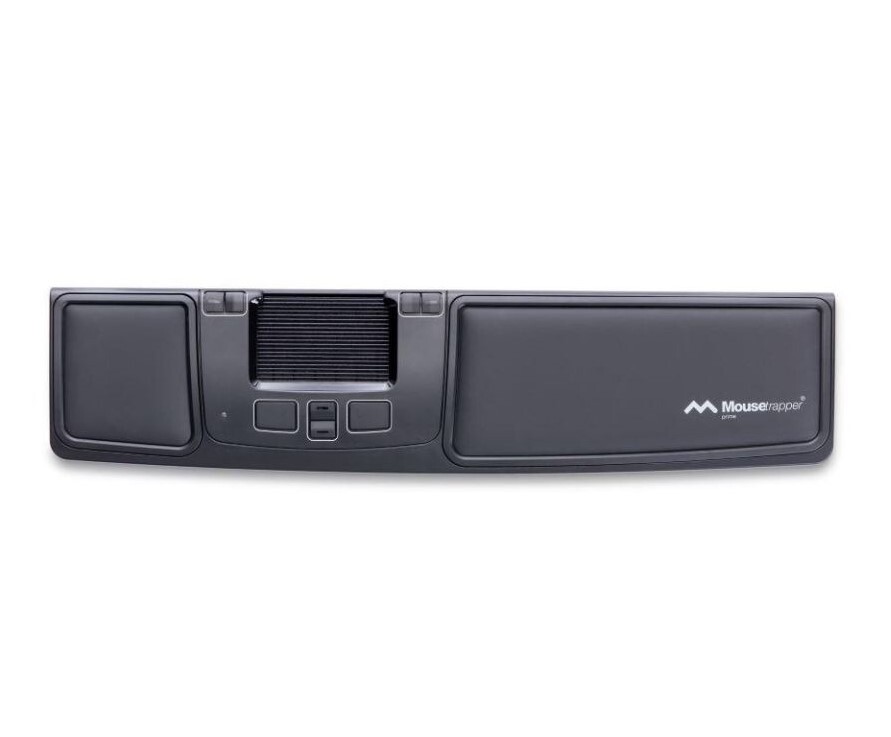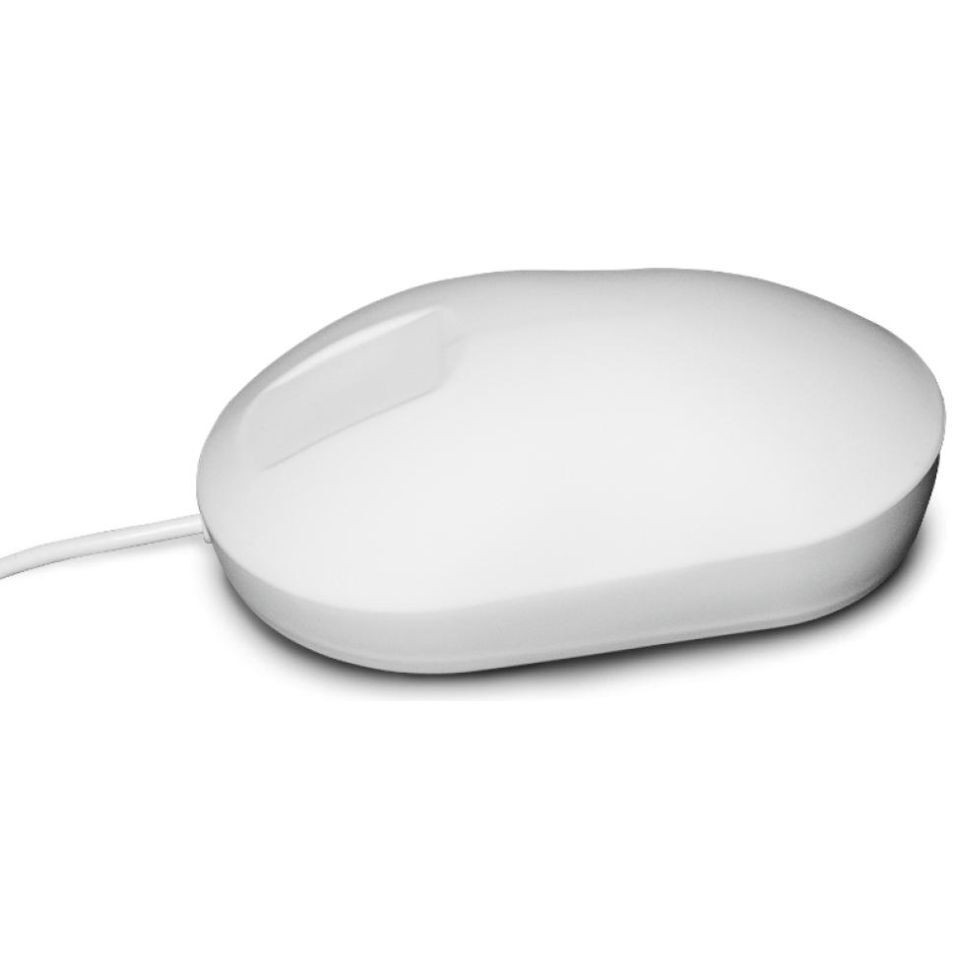Ergonomic mouse
We spend many hours behind the computer both at work and at home. The computer mouse is therefore a frequently used object and a major cause of RSI complaints. With a traditional (standard) mouse, the hand typically rests flat on the mouse. This causes the wrist joint to twist and the hand to assume an unnatural position. This can lead to pain in the forearm, wrist, or the entire arm. Ergonomic mice promote a natural, healthy working posture, which can help prevent RSI complaints.
What is an ergonomic mouse?
Ergonomic mice are designed to provide comfortable and easy-to-use solutions while reducing muscle tension. Ergonomic mice differ from traditional (usually flat) mice in their special design, often incorporating a vertical hand position. This vertical ergonomic mouse allows the hand to rest in a natural position on the mouse, reducing muscle tension in the wrist and arm. This helps prevent or alleviate pain caused by RSI.
There are also suitable ergonomic mice available for RSI complaints that occur in areas other than the wrist or arm, such as central (rollerbar) mice that ensure an optimal mouse position in front of the body. This allows you to work within the shoulder line, preventing strain on the shoulders and neck. Additionally, there are various other ergonomic mice available, such as trackballs, foot mice, and pen mice.
Desired relaxation
Right-handed/Left-handed
Connection
Size
Color
Brand
Number of buttons
Programmable buttons
Control type
Wrist rest
Resolution
IP classification
Discover all products

- Prevents RSI through an ergonomic, vertical design
- Easy to install thanks to plug-and-play
- Specifically designed for left-handed users

- Vertical grip
- With break indicator
- Plug & Play
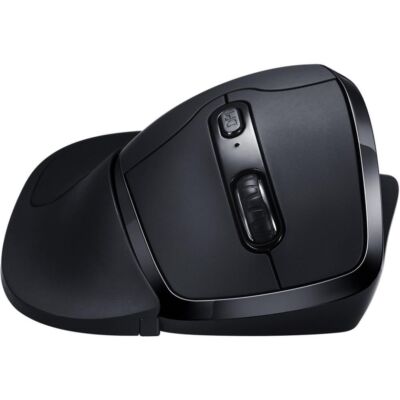
- 33° tilt angle
- Integrated palm rest
- Plug & Play via cable

- 4000 DPI
- 6 programmable buttons
- Carbon fiber control bar
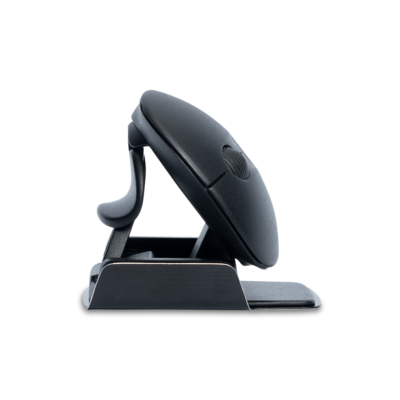
- Rotating design
- Suitable for both left- and right-handed use
- Can be used both wirelessly and wired
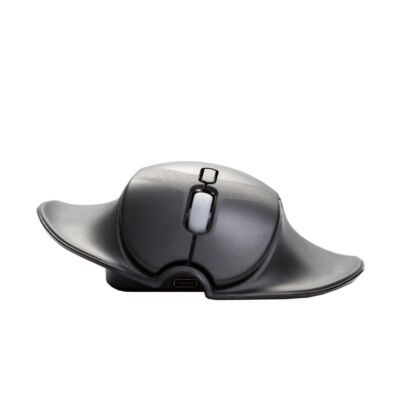
- Full hand support
- Suitable for both left- and right-handed use
- Can also be used while charging
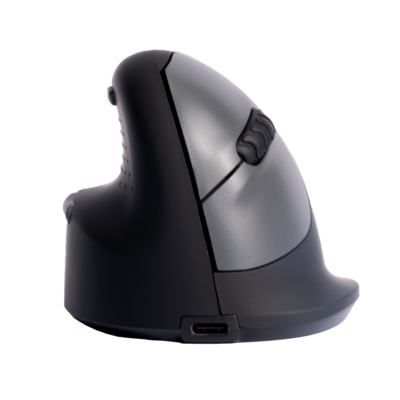
- Specially for left-handers
- Wireless via Bluetooth
- Smart break indicator

- Plug & Play
- Stable and durable
- Replaceable wrist rest
Why use an ergonomic mouse?
An ergonomic mouse is essential for a comfortable and healthy workstation. Unnatural hand positions while using a mouse are a risk factor for developing complaints in the hands, wrists, arms, and shoulders. Ergonomic mice help improve your posture and reduce muscle tension, allowing you to work more relaxed, which leads to fewer complaints and increased productivity.
Types of ergonomic mice
If you spend a lot of time behind a computer, it's important to ensure a comfortable and healthy working posture. An ergonomic mouse can help by reducing the strain on your hand, wrist, arm, neck, and shoulders. There are different types of ergonomic mice available, designed to meet various needs and prevent discomfort. Here are some of the most popular types of ergonomic mice:
Vertical mice
✓ The vertical position promotes a natural hand, wrist, and arm posture.
✓ Can be used both preventively and for rehabilitation.
✓ Various models available, such as the HE Mouse and Oyster Mouse.
Central Rollermice
✓ Prevents or reduces shoulder, neck, and arm discomfort.
✓ Ideal for advanced RSI complaints.
✓ Various models available, such as the Contour Rollermouse Pro2 Black and the ErgoSlider Plus Ergonomic Rollermouse.
Hippus Handshoemouse
✓ Highly suitable for RSI complaints in the hand, fingers, and wrist, such as mouse arm and carpal tunnel syndrome.
✓ Provides excellent support to the hand at an ideal angle of 25-30 degrees, promoting complete relaxation of the forearm and hand.
✓ Available in different sizes, left- and right-handed models, and wireless options.
Trackballs
✓ Suitable for preventing or reducing shoulder, neck, and arm discomfort.
✓ The mouse remains stationary on the desk while the ball is controlled by the fingers and thumb.
✓ Available in various models.
Pen mice
✓ The pen grip reduces muscle tension in the forearm, wrist, and hand.
✓ Suitable for precision work.
✓ Available in various models.
Which ergonomic mouse for which complaints?
Each type of ergonomic mouse is designed to help alleviate different complaints. Here is a list of common complaints and the ergonomic mouse that may be most suitable:
Wrist or arm pain
A vertical mouse or central rollermouse can reduce tension on the wrist and arm, alleviating pain.
Neck or shoulder pain
A central rollermouse, Hippus Handshoemouse, or foot mouse can reduce tension in the neck and shoulders by moving the cursor to the center of the body.
RSI (Repetitive Strain Injury)
A vertical mouse, central rollermouse, or Hippus Handshoemouse can help reduce tension and strain on the hand and wrist, reducing the risk of RSI.
Limited workspace
A trackball mouse or touchpad mouse is convenient for people with limited workspace, such as laptop users.
Reduced hand function
A joystick mouse or pen mouse may be helpful for individuals with reduced hand function.
It's important to note that choosing the right ergonomic mouse depends on the specific complaints and needs of each individual. It's always best to try an ergonomic mouse before making a final decision. If you have persistent complaints, consult a physician or ergotherapist.
Ergonomic mouse for left-handed individuals
Ergonomic mice for left-handed individuals are specially designed to meet the needs of left-handed people. These mice have a mirrored design compared to traditional mice, positioning the buttons and scroll wheel in a convenient way for left-handed users. You can find our range of ergonomic mice for left-handed individuals here.
Benefits of a wireless ergonomic mouse
A wireless ergonomic mouse provides more flexibility and mobility while working since you're not restricted by a cable. This can be especially useful for
people who frequently change positions or have limited workspace. However, it's important to ensure a reliable wireless connection and sufficient battery life to avoid running out of power in the middle of your work. You can find our range of ergonomic wireless mice here.
Steps to choose a suitable ergonomic mouse
The type of ergonomic mouse that suits you best depends on the type of work, any complaints you may have, and your personal preferences. When choosing an ergonomic mouse, consider the following factors:
Are you using the ergonomic mouse preventively or for rehabilitation?
Where exactly do you experience discomfort (wrist, neck, shoulder, fingers, hand)?
What type of tasks do you typically perform?
What is the size of your hand?
Do you prefer a wired or wireless mouse?
Are you right-handed or left-handed?
If you need assistance in finding the right mouse or have any questions, our advisors are here to help.




